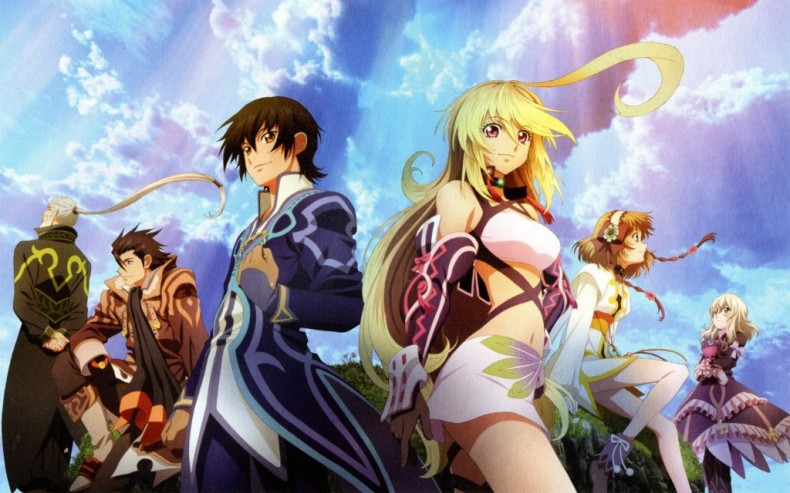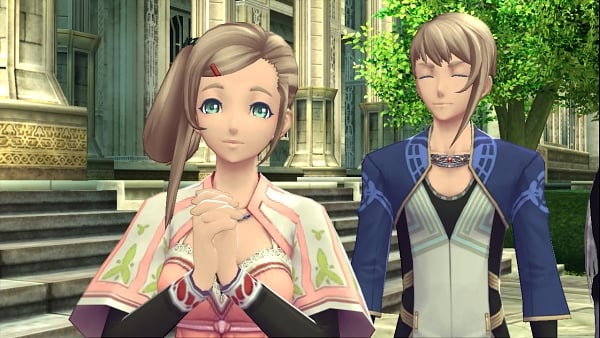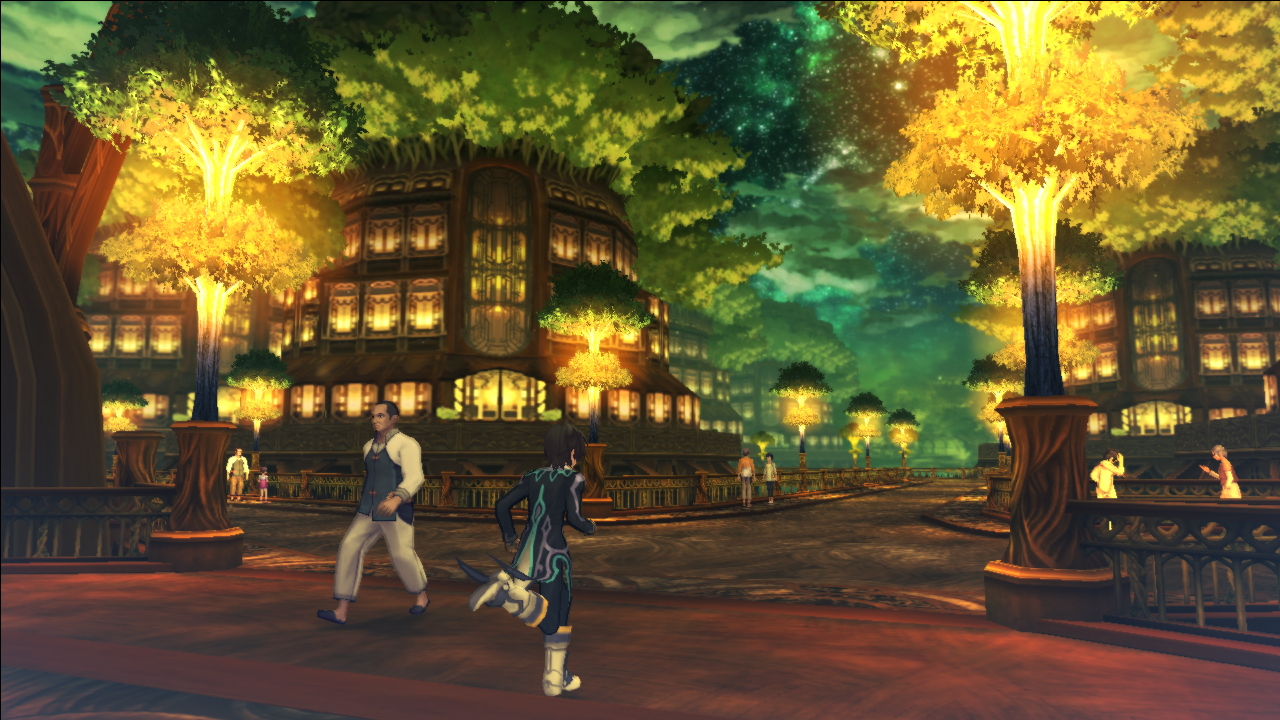Tales of Xillia Review

Epic storyline that will keep you guessing, Wonderful character development, Great action-based gameplay, Leveling system works great, Great landscapes, Top Notch voice-acting, Great replay value.
The graphics are sub par, Nothing changed from it's original 2011 release in Japan, Odd field map transitions early on in the game.
Tales of Xillia is a great addition to the PS3's Japanese RPG library, featuring top notch voice-acting, crazy fun combat and a story that will make you laugh, cry, clench your fists in anger, but most of all, will leave you feeling completely fulfilled.
A World Worth Saving
Ah Japanese RPG’s, a staple of my gaming life. In Japan, the game market is rife with such games (obviously that’s why they’re called JRPG’s), but there’s two major series among the countless games, and those two series would be Final Fantasy and Dragon Quest. But there’s always been one series following right behind those two, and that would have to be the Tales series. Starting way back on the Super Famicom with Tales of Phantasia in 1995, the series has spawned 14 games in the main series, and 9 in the sub-series. With the newest NA release, Tales of Xillia for the PlayStation 3, fans (myself included) have been aching for this game to receive a western release ever since it debuted in Japan two years ago. After playing through this game extensively and logging in nearly 50 hours in three weeks, I can say that it was definitely worth the wait.

Story
Story has always been a strong suit for the Tales series, and it keeps up in Xillia. The game starts with the option to play the game as either Jude Mathis, a soft spoken goody-good medical student, or the mysterious Milla Maxwell. This will affect certain cutscenes and even some playable events in the game. In my first run I went through as Jude, and I’ve started a second playthough with Milla. I can already tell the difference between starting with Jude or Milla. The story, in a nutshell, goes as so; Jude and Milla cross paths while Jude is looking for his professor in the Research Facility of Fenmont, The two decide to go together since they’ll both be infiltrating the Facility either way. While investigating, Milla reveals that she’s there to destroy a military weapon called “The Lance of Kresnik” due to the fact that it will disrupt the balance between human beings and spirits. Humans rely on spirits for special abilities called “Spirit Artes” and are largely dependent on spirits. Along with humans being dependent on spirits, so is the environment they live in. Without spirits, nature will begin to die along with humans, the most cherished resource. After Jude realizes this and sees the corruption of the military firsthand, he decides to join Milla on her quest to eradicate the super weapon that is the Lance of Kresnik.
![]()
Throughout the game you’ll end up meeting an ensemble of characters, 6 playable in all. These characters develop and grow throughout the entire game. I found myself even going back to previous towns just to check up on characters that had a role earlier in the story, and the best thing is there’s actually cutscenes for when you come back to characters in the game! It’s great, and it’s something I haven’t seen before in a game and makes you feel as if the characters are alive after the main story has passed them by. I felt a bond with all of these characters, especially the ones that are in your party. From the cute, innocent Elize paired with her loudmouthed stuffed animal Teepo, to the silent and reserved gentleman that is Rowen. One thing that I can say about the characters is that they definitely grow on you. For example, when I first saw/heard Teepo, I absolutely hated him. By the end of the game he was one of my favorite characters.

Lady Driselle and Lord Cline in their welcoming nature, two of my favorite sub-characters in Tales of Xillia.
Tales of Xillia‘s story is a roller-coaster of ups and downs, surprises and loops. The game had me on the edge of my seat just trying to mentally prepare myself for what was coming next. The story moves at a quick pace, but not to the point where you’ll find yourself asking “Wait, what am I supposed to do now?”, and even if you do feel that way, the game has an “Event List” in which you can get a brief summary on the story and everything that has happened so far. The story is gripping and consistently interesting.
Gameplay
One thing that makes the Tales series different from the other two franchises I’ve mentioned above is the combat. It may look like the same thing you’ve seen in a Final Fantasy game, but once the screen transition between the field map to the battle screen is over, you’ll quickly realize what’s so fantastic about the battle system. When engaging an enemy, the screen transitions to what Tales calls a battle map, four party members are there to take part in combat in which you can switch between, but here’s the kicker, the combat plays out like an action beat em up game mixed with RPG elements like abilities and items. The combat is smooth and exciting, and battles only last from about 10 seconds to a minute, so you won’t get tired of fighting field monsters as quick as you would in a traditional turn-based RPG.
The combat can take on various forms depending on the character you play. You’ll have six characters to choose from by about 15 hours into the game, and they all fill different roles within the party. Jude uses his fists and legs in combat which makes him primarily an offense-based character aside from other abilities while Milla uses a mix of swordplay and Spirit Artes to take down her foes. All characters feel complete when you play them, and feel like another essential member of the party. Even though Jude and Milla are constantly in the spotlight, it doesn’t mean the other characters feel less like a main character when played in battle.
Two new additions to the combat this time around are the ability to “Link” with your teammates and the new leveling system, the “Lilium Orb”. We’ll start with linking; doing so will grant you both shared abilities and stats and allow you to perform “Link Artes”, these are when you and a party member combine abilities to make even stronger ones. You can even chain these together during a combat bonus called “Over Limit”. These links keeps the game new and refreshing by giving you the opportunity to take advantage of enemy weaknesses with specific partner link abilities. For instance, linking with Alvin, the gun-toting mercenary, will make Alvin use his “Deft Breaker” ability in which he breaks the enemy’s guard. This is extremely useful when fighting enemies who block constantly, and each character’s ability has it’s own specific time to be used, so you’ll find yourself switching back in forth if you choose to take full advantage of the system.

Onto the next and most exciting addition, the Lilium Orb. Each character in your party has one, and it’s basically a way to level your characters into specific roles. Each time you level up you get GP which can be spent to activate nodes on a grid that makes up the Lilium Orb. Abilities and special skills are unlocked through this and make each character different in their own way. The system is a great addition to Tales, and I found myself enjoying leveling each character to my own liking, the only complaint is that leveling the Lilium Orb can sometimes take away from the action, but overall it’s not something that was excruciatingly time consuming.
Graphics & Sound
Most people would prefer the good before the bad, so I’ll start with the good: the sound. The sound in this game is absolutely top notch. From the voice acting to the sounds of Jude’s fist-mashing into enemies to the soundtrack; the sound in this game is captivating and I loved every second of it. I can’t say enough good things about the voice cast on this game as every character talks with the appropriate emotions, whether it be happy, silly, sad or angry – they all work perfectly. My favorite voice on the cast would have to be the elderly Rowen as he truly sounds like the gentleman he portrays on the screen.

The beautiful town of Fenmont is lit completely by spirit artes. How impressive!
Sadly, I cannot give the same praise to the graphics. While I understand that this game was released two years ago in Japan, I feel that they could have polished some of the textures and cleaned the game up a bit. Even though the graphics aren’t the best, I can say that some of the areas in this game are breathtaking. I found myself taking a step back just to look in awe of the landscapes pretty often. But, some of the animations during cutscenes were also sub-par. Sometimes the mouths wouldn’t match up to the words and other times the animation felt a tad bit delayed. But that didn’t pull away from the cutscenes too much. Overall, the graphics aren’t horrible. But they’re not great either.

A scene from the beautiful opening.
One thing I can say about the graphics, which isn’t really about the in game graphics, is that the game features great anime cutscenes in the heat of the story. Just when things get to their most intense, Xillia brings the cinematics with the powerful and beautiful animated cutscenes, and there’s definitely a good amount throughout the game, not like in Tales of Symphonia where we were promised many, and only got two in reality.
Notable Extras
The game features many things to do after you’ve beaten the game, from hidden side-bosses, side-quests, to Alfried Treasure’s to collect. I beat the game at 42 hours, and have put in 15 hours additionally since then. One notable extra is the additional dungeon at the end of the game, Magnus Zero. Not only is it a whopping twenty floors, but after you beat the boss at the end, you have the opportunity to go through it again at a harder difficulty, and this happens twice, for a total of three runs.
Issues
There’s only one issue throughout the whole game that I experienced, and it wasn’t even really an issue. In past Tales games, you’d walk from field map to field map and then between each area you’d have to walk on the overworld map. Obviously the overworld map is outdated at this point, so in Xillia instead of the overworld, all of the field maps are connected on one big path. The issue I had with this was that sometimes the preview of an area of the next Field Map didn’t always match up to what you actually walked on at the beginning of the next field map. It felt as if it were skipping large portions of the world – like I was missing out. But this only happened a few times in the beginning, and it didn’t feel like an issue by the end of the game.
SpawnFirst Recommends…
Tales of Xillia deserves to be bought by RPG fans and at the very least, tried out by gamer lovers of any genre. The game gives you what you pay for: a 45 hour long story with tons of hours of optional gameplay on top of that. Overall, this game is a welcome addition to the wonderful Tales series, and I can’t say enough that it is absolutely worth the full asking price.











